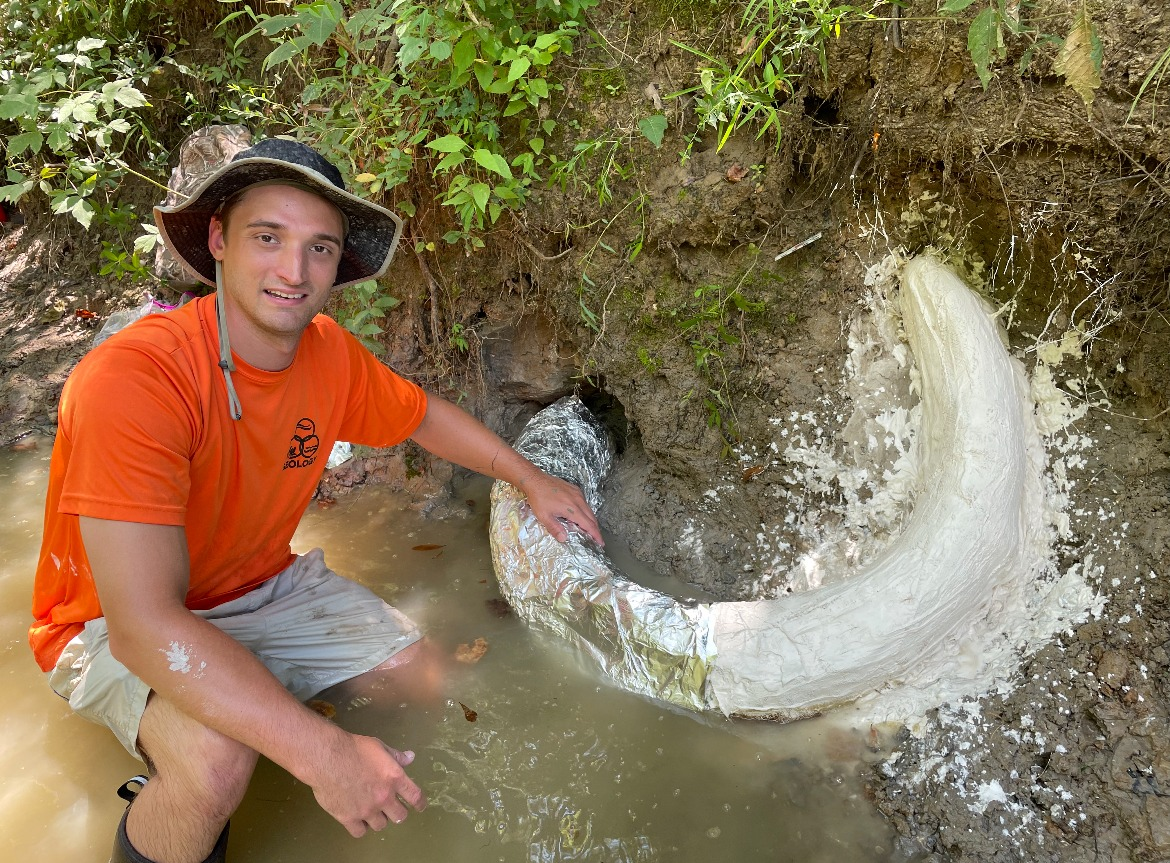It’s not every day you find a 2-meter (7 foot) tusk from a member of the same order as elephants, so finding one sticking out of a steep embankment in Madison County, Mississippi was a big event for amateur collector Eddie Templeton. When he alerted the Mississippi State Geological Survey, he learned he had found something more significant – the state’s first mammoth tusk, rather than the legacy of a mastodon as he first imagined.
North America supported an impressive array of Proboscideans until the party was ruined by humans or climate change, depending on who you believe. Woolly mammoths are the most famous of these, thanks to their presence across much of Eurasia as well, and their relatively late survival.
However, even at the peak of the Ice Age no woolly mammoth would have ventured as far south as Mississippi, they were woolly for a reason. Columbian mammoths (Mammuthus columbi), and Jefferson’s mammoth (which may or may not be distinct species) ventured into territory as warm as Florida and Mexico, however. Nevertheless, mammoth tusks were unknown in Mississippi before because at the time the state was mostly forests, and mammoths of any sort preferred open grasslands.
Mississippi and similarly forested areas were left to mastodons, which were browsers on tree leaves more adaptable in their territory. Gomphothere, a few of whose teeth have been found along the river that gives the state its name, also had a presence.
Irrespective of the species, Templeton knew this was a find worth preserving, and to do so he needed to contact the Survey. Tusks may seem tough, but even exposure to the summer sunlight can destroy them.
Fortunately, the tusk was largely underwater, and a team was able to dig it out in a day. Extraction revealed its shape to be that of a mammoth’s and that it weighed 270 kilograms (600 pounds). “When I learned it was a mammoth and not a mastodon, I got even more excited. I’ve never found any part of a mammoth. I always hoped to find a part of a mammoth, but that’s pretty rare down here,” Templeton told the Clarion Ledger, of nearby Jackson.
A State Geological Survey employee with the tusk while it was being covered in aluminum foil and covered in burlap strips soaked in plaster to protect it.
Image Courtesy of Mississippi Department of Environmental Quality
Scientists from the Survey concluded its former owner had died in or near a stream and been washed onto a sandbar in a flood, where its body got covered, preserving the tusk.
Templeton has found the area a happy hunting ground for Ice Age fossils. He recently came upon a well-preserved toe-bone of Smilodon fatalis or saber-toothed cat (more often known as a saber-toothed tiger, but their tiger relationships is remote) in neighboring Yazoo County.
The Survey’s James Starnes told the Clarion Ledger this was the largest animal whose remains had ever been found in the state. “This was a big, big animal. This would have dwarfed a woolly mammoth.”
So what was a mammoth doing in Mississippi in the first place? Ice Age animals did not respect future state boundaries, and while most of Mississippi was forested, there was some grassland that would have appealed to Columbian mammoths, including Madison County. Although this is the first mammoth tusk found in the state, a few teeth had previously established their presence.
As the size of the tusk hints, Columbian mammoths were bigger than woolly mammoths, or modern elephants for that matter, reaching 4.5 meters (15 feet) at the shoulder and weighing as much as 10 tons. The project to bring back the woolly mammoth might even be said to be under-ambitious.
Source Link: Mississippi’s First Mammoth Tusk Spotted By Amateur Fossil Hunter
